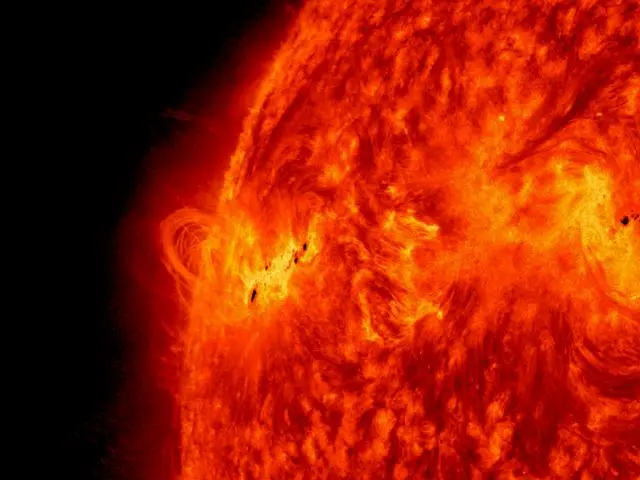
American technology company IBM and the National Aeronautics and Space Administration (NASA) in the United States are trying to change the game in predicting solar weather patterns with Surya—an open-source artificial intelligence model trained on high-resolution solar observation.
According to NASA, Surya, which is a Sanskrit word for sun, uses AI to analyze large amounts of solar data to help scientists "better understand solar eruptions and predict space weather that threatens satellites, power grids, and communication systems."
It said that "the model can be used to provide early warnings to satellite operators and helps scientists predict how the Sun’s ultraviolet output affects Earth’s upper atmosphere."
Unlike standard solar weather models that use limited satellite imagery, IBM said that Surya was trained on nine years of detailed data from NASA's Solar Dynamics Observatory. This gives the model superior spatial resolution and the ability to detect solar features at a level of detail and context that large-scale AI training workflows had not previously achieved.
“What we do in Surya is not just solar weather; it's really solar physics. That's, I think, the first thing. And we're trying to understand the Sun with AI. And then solar weather is just only one implication of this,” said Johannes Schmude, a senior research scientist and manager at IBM’s Thomas J. Watson Research Center, in an interview with GMA News Online.
“The events on Earth—you do get power outages, you know; precision electronics are affected. It doesn't happen super often, but if you operate a power grid, you care. If you operate satellites, you care. And obviously, there's a lot of financial value in those things, you know,” he added.
Insurance marketplace Lloyd's projects that the global economy could lose $2.4 trillion over a five-year period due to systemic risks. This forecast includes an expected $17 billion loss stemming from the potential threat of a major solar storm.
Schmude said that the use of AI in solar weather forecasting has unlocked information about the Sun that the human eye cannot see.
“You see only half the Sun, you know, because the satellites we use only see the Sun from the Earth side, so you don't see what's happening on the far side. Also, when we say you see, you know, the Sun is not, like, a solid surface, no. It's sort of, you know, it's this plasma body, you know, in space, or this gas from the Sun,” Schmude said.
“So, what I'm trying to say is you have a very complex system of which you only see a part, okay. …the assumption is that the AI uncovers dynamics and uncovers relationships, which, as a human, would be very hard to find, you know,” he added.
With the widespread use of AI these days, IBM said that weather forecasting could be more accessible in the future.
“You can run a high-performance weather model on your laptop if you want to, okay? And this is really cool because it democratizes weather forecasting. You know, if you're like a smaller country, you cannot afford a supercomputer. In a few years, you can probably run your own weather model tuned for your local area, assuming there's enough observational data,” said Schmude.
Surya is available on Hugging Face, an AI community and platform where machine learning models, datasets, and applications are open and accessible to everyone. —VBL, GMA Integrated News
